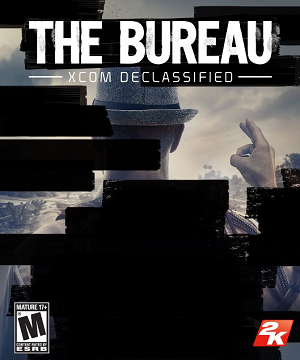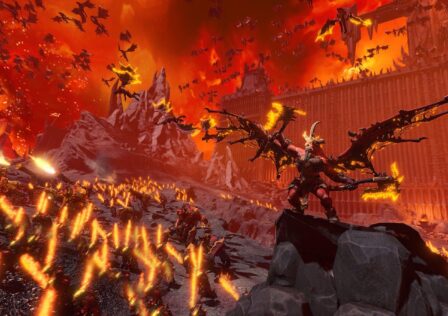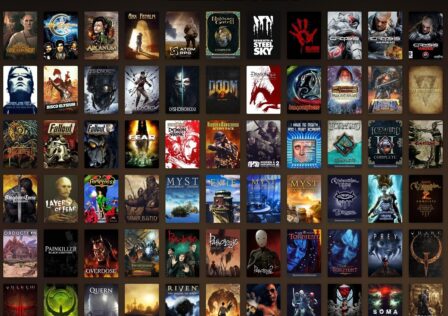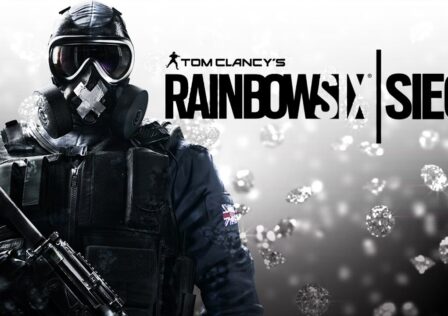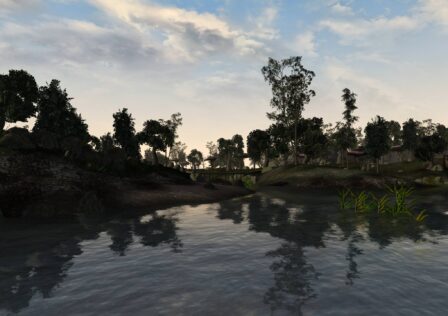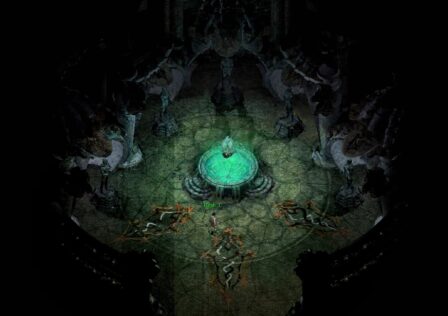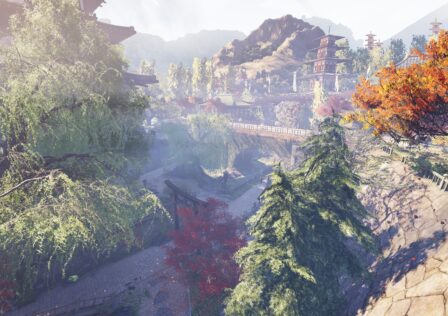The Bureau: XCOM Declassified is the latest chapter in the well known and well received XCOM franchise. Though contrary to what most others seem to believe, The Bureau isn’t meant to be a true XCOM game: it’s a spinoff. It’s an attempt to make an XCOM shooter, it isn’t a “main game” in the franchise nor does it attempt to be like XCOM: Enemy Unknown or any of the others. It also doesn’t follow EU canon.
2K Marin wanted to take squad-based, tactical and strategic shooters to a new level with The Bureau: XCOM Declassified, opposed to making a new game for hardcore XCOM fans. With that being said, let’s see what The Bureau is made out of.
Closer Look
Like many other games, The Bureau: XCOM Declassified uses Unreal Engine 3. But since the name XCOM is only really known to PC Gamers, the developers were sure to give The Bureau all of the options needed to satisfy PC gamers. They did just that: this game has a number of audio and visual options, a Field of View slider, you can disable aim assist, and much more. This is nice to see, though unfortunately you have to sit through splash screens which can’t be skipped, and sadly there’s no walk button.
It also uses Steamworks, so it requires a Steam account which everyone should have by now anyway.
The Bureau: XCOM Declassified takes place during 1962. The developers went through good lengths to replicate the 60s, creating authentic and detailed levels with fitting music. Maps aren’t just empty shooter maps, The Bureau does a good job making the game look and feel like the 1960s.
You take on the role of agent William Carter, a washed up man with a disturbing past. First a CIA agent, eventually you’re induced into the Bureau of Strategic Emergency Command, established in the event of invasion on U.S. soil. Though the invaders aren’t the expected Soviet Union. This game has a bit more story and character emphasis than other XCOM games, and takes a cinematic approach to storytelling. You’re also given dialogue options most of the times, like an RPG.
Throughout the game you’ll be investigating extraterrestrial presence, and battling against them for the sake of mankind. You’re a squad leader, and you get to choose from your base what missions to go on, and what missions to assign other soldiers to. But you’re not the commander like in other XCOM games, you’re a field agent. You can only recruit four people, for which you can assign a name, face, class, background, outfitting, and equipment.
There are four classes which you can assign each new recruit to: Support, Commando, Recon, and Engineer. Each one has unique abilities, and you get to choose more when leveling up, much like an RPG. Carter, the protagonist, also has his own set of unique abilities. As a squad based game, you must take two people with you for every mission. Squad members have a level limit at lvl 5, while the player’s limited to lvl 10.
After the opening mission, you’re relocated to a secret base of operations, which is where you will operate out of. Like other XCOM games, it’s a hub area and a place for you to customize your squad, choose your missions, and deploy your squad. You can walk around freely, talk to people, and it has side quests of its own. Though this isn’t a Bioware RPG, NPCs don’t get new dialogue after every minor mission: only after most main missions. But there is a lot of ambient dialogue in the base.
Unlike other XCOM games, there’s no managing in the base. Again, you’re not the commander, but you’re a field agent. You aren’t given any control over the resources or the base itself. The Bureau: XCOM Declassified is a spinoff and a shooter, not a turn based strategy game.
You still get to pick which missions you go on, giving you freedom to do what you want, when you want. The Bureau provides a number of minor missions and the expected major missions. The former are side quests which don’t have to be done, while the latter are the lengthier, significant main story missions. Side quests can be done in as little as 15-20 minutes, while main missions will take much, much longer. Both are extremely linear however, though levels are more detailed than I expected. You’ll find audio recordings and written notes from civilians about the alien invasion, which add to the atmosphere.
You can also deploy your squad mates on their own missions, which you can’t attend. This makes them unavailable for you to take on your own missions. If they succeed on these missions, they’ll bring back some kind of reward which could range from alien tech to a new, higher level recruit. If they’re killed on a mission, they’re gone forever and you need to recruit a new agent who starts off at lvl 1. This is also true if a squad member dies on any of your missions: they’re deaths are permanent. Recruiting is done by simply clicking on an empty slot on the soldier roster, and then it brings up the character customization screen.
The game also uses an autosave system and features no manual saving, to make the game more intense. No quickloading saves in the event of a casualty. This, combined with the strategic squad-based gameplay, makes The Bureau: XCOM Declassified a different type of shooter.
Combat is vaguely similar to the Mass Effect games. It has a cover system, and when in cover you can dive away to a new location, climb over obstacles, and more. However, the key to move into cover is the same as the sprint key. This leads to all sorts of problems; imagine yourself in a tight space. Your cover is no longer safe, so you sprint away to a more safe location. However, since the cover key is the same as the sprint key, you constantly take cover on objects when you’re only trying to run. This is quite the annoyance.
During the game you have two squad members, you can pause combat (though it doesn’t come to a complete standstill, it’s close to it) and give orders to your squad mates. This must be done in order to succeed. When paused, you can assign each squad member a target, you can move them around the battlefield, and you can select one of their abilities or queue up multiple which they will use against the enemy. There are all sorts of unique abilities that you unlock when leveling up, such as deploying a projection of a soldier to use as a distraction, or laying down mines, lifting a target into the air, and much more. The game keeps some of its stat-based heritage: some of the abilities are passive and do things like increase your hit chance.
You can also hold F (by default) to scan the battlefield to get a better idea of what’s happening, and what lies before you.
The combat mechanics are among the very best when it comes to third person shooters. It requires more planning and more tactics than just about any other. But there are some setbacks, such as the cover system key being binded to the sprint key, and also the AI. I don’t think I’ve ever seen an Unreal Engine 3 game with good AI, but a strategic game like this would benefit greatly from it.
AI is all over the place; when ordering a squad member to take cover on a specific location, they might randomly leave cover and move out into the open, and then get shot to death. Enemy AI is just as stupid and they do the same thing.
This doesn’t always happen, but when it does it’s extremely annoying. Sometimes the AI re-position themselves properly which is nice to see, others they re-position themselves inappropriately and get shot up because of it. Enemy AI also spam grenades as much as S.T.A.L.K.E.R. Clear Sky or Call of Duty on Veteran difficulty.
Friendly AI also expose themselves too much during firefights. Even with good cover, they constantly get shot up because of this. They spend too much time leaning or standing and firing on the target, and don’t immediately take cover when shot. On a related note, sometimes the follow/rendezvous command takes several tries to work.
As good as the mechanics are, the AI needs work in order to fully utilize this. AI gets noticeably worse in larger scale battles, which isn’t a good thing. Still, it could be much worse. AI doesn’t always do retarded things, but when they do, it’s frustrating and really harms the strategic emphasis. Many of the missions also lack creativity, and feel similar to any other shooter in recent years, except for the mechanics. You typically end up going through big waves of enemies, defending a point, and then rescuing someone or retrieving intel or technology. The detailed levels and advanced mechanics help, but only so much.
Audio & Visuals
Since The Bureau: XCOM Declassified uses Unreal Engine 3, it of course has lackluster anti-aliasing. When poking around in the files, it looked to me like this game only has FXAA. If you run the game in DX9 mode, you can force SGSSAA or perhaps OGSSAA and you should get excellent results. When running it in DX11 however, you’re stuck with shader based AA. I tried an SMAA injector too, and it gave me artifacts and graphics glitches that made the game unplayable.
It looks like a UE3 game. It isn’t particularly good looking or bad looking. Tree models suffer from low polygon count, overall polygon count and object detail are just unimpressive. Texture quality is average, shadows are above average, lighting/post processing are above average. Dynamic sunshafts are included which look fake and over the top at times, but some people might like it. Ambient occlusion is better than many other UE3 games, but it suffers from a glowing effect at times.
This game also uses PhysX to some extent. Volumetric smoke effects demonstrate it, but not much else.
You’ll probably want to disable the Screen Space Reflections option, which causes noticeable drop in frame rates with little gain in visual quality. The game is also poorly optimized: my system (i7 2600 @ 4.2 GHz, 8GB DDR3 1600, GTX 680) usually gives me 60 FPS with a frame rate limiter set to this, but at times it will drop to anywhere between 20-40. And I only run the game at 1920 x 1080. I suspect this will be fixed when newer GPU drivers come out.
Audio quality is quite good. Voice acting, especially for NPCs, is certainly above average. Footsteps are noticeably loud and audible, very similar to the classic Resident Evil games in that regard. Guns and explosions are nice and loud, though they don’t rock your world like some other games do. Still, not much to complain about here. Let’s move on and sum up this review.
Conclusion
The Bureau: XCOM Declassified gets a lot of undeserved hate, and this was to be expected. It’s called XCOM, but it isn’t an isometric turn-based strategy game, so many XCOM fans hate it. It’s also a shooter, but isn’t a dumbed down casual shooter like Gears of War or Call of Duty, so generic shooter fans hate it too. Most people don’t see this game for what it really is: a spinoff. A tactical and strategic shooter, and one of the better ones at that.
Thankfully, us at GND-Tech do recognize this. But as usual, we also recognize the flaws of this game. The most noteworthy one is the AI; it isn’t any worse than other UE3 games I suppose, and AI isn’t consistently bad, but at times they will do ridiculous things that just ruin the battle. Binding cover and sprint to the same key also causes all sorts of problems. The Bureau: XCOM Declassified is a very good tactical shooter nonetheless, and it does raise the bar in this genre. More shooters should be as strategic as this one.
For a breakdown of our scoring system and how it works, look here.
- Presentation: The Bureau gives you a lot of options, since they’re aware of their dominant PC gamer fanbase. It also reports your gameplay time which is nice to see. I don’t have any complaints here, setting up and navigating the game works just fine. 20/20
- Story: Story isn’t the emphasis of this game, but surprisingly, it does have a bit of a cinematic presence and offers a fair amount of dialogue options. It exceeded my expectations here even if it’s not actually very good. 13/20
- Gameplay: The hub-based gameplay is nice, character customization is very good for a shooter, combat mechanics are some of the best of any tactical shooter. However, binding sprint and cover to one key was a mistake, and the AI needs a lot of improvement. The lack of a walk button is also a disappointment. 16/20
- Audio/Visuals: This game has a fitting and minimalistic soundtrack, good voice acting, and decent sound effects. Graphics are fine, not anything noteworthy especially in 2013, but they did a nice job replicating the 1960s, with the added twist of futuristic alien technology. 16/20
- Lasting Appeal: The Bureau can last for 20-30 hours if you do most side quests and interact with people at the base. It can be rushed and beaten in about half this, which isn’t recommended. Missions are 100% linear and can become repetitive, but the hub-based gameplay and freedom to choose side quests and deploy troops does add to replay value. 12/20
- Overall: 77/100 (Needs Work)

